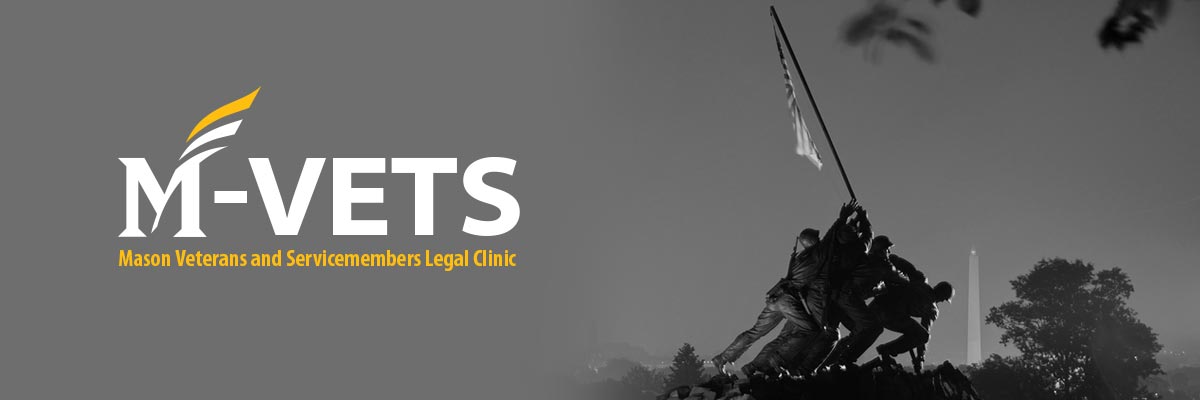
By Fall 2018 M-VETS Student-Advisor
Our nation’s brave soldiers can be preyed upon, not only on the battlefield, but also in our nation’s financial marketplaces.[1] Several key characteristics make our servicemembers more apt to becoming preyed upon financially. Servicembers are generally young and lack financial sophistication, robust savings, or guidance from family members; they also receive regular paychecks and have steady employment.[2]
These are key ingredients for “predatory lending.”[3] Once a predatory lender sets its hook, our servicemembers are “placed at a disadvantage and penalized through high fees and interest and dire consequences if they default.”[4] Besides destroying a servicemember’s personal finances, predatory lending impacts the military through readiness standards and retention.[5] The Department of Defense (DoD) “expects [its] [s]ervicemembers to maintain personal readiness standards, including paying their debts and maintaining their ability to attend to the financial needs of their families.”[6] Running afoul of personal finances can impact a servicemember’s readiness, leading to separation.[7] Separating servicemembers that fall into financial trouble can be costly. The DoD estimates that a separation costs the DoD approximately $58,250.[8]
Congress and the DoD recognized the threat that predatory lending practices have on servicemembers and the military. In 2006, the DoD conducted a study on predatory lending practices,[9] which culminated in the Military Lending Act (MLA).[10]
Initial Implementation of the MLA
The MLA was implemented in 2007 by the DoD through 32 CFR § 232 and protects covered borrowers—active duty members of the military, their spouses, and children, and certain other dependents—from certain lending practices.[11] The DoD’s initial regulation provided protections from predatory lenders through “limitations on and requirements for certain types of consumer credit for covered borrowers.”[12] Specifically, these “limits and requirements” were only placed on “three narrowly-defined consumer credit products”: 1) closed-end payday loans for no more than $2,000 and with terms of 91 days or fewer; 2) closed-end auto title loans with terms of 181 days or fewer; and 3) closed-end tax refund anticipation loans.[13]
The DoD’s regulation limited interest rates and fees charged by creditors on these three products, including a maximum Military Annual Percentage Rate (MAPR) of 36 percent.[14] Creditors were also required to provide mandatory loan disclosures, in addition to those typically required under the Truth In Lending Act (TILA).[15] Further, the regulation provided for various penalties and remedies for violating the MLA.[16]
Providing a “Helmet” – 2015 Expansion of the MLA
Because the original MLA protections were “narrowly focused” on three specific types of consumer credit products, lenders found ways to continue predatory lending practices by dodging the MLA through products outside of its protection. For example, offering servicemembers open-ended lines of credit.[17] One example—and unfortunately this is one of many such examples—of such dodging of the MLA left one poor sailor with a loan at an APR of 499 percent.[18] The consequence of the MLA’s narrow focus is summed up nicely in the following quote by the former director of the Consumer Financial Protection Bureau (CFPB) Richard Cordray: “The current rules under the Military Lending Act are akin to sending a soldier into battle with a flak jacket but no helmet. To give our troops full-cover protection, the rules need to be expanded . . . .”[19]
MLA protections were indeed expanded in 2015 and servicemembers were given a metaphorical “helmet.” MLA protections now “cover significantly more loans and lenders,”[20] as the regulation’s definition of consumer credit was broadened to align with the definition of credit in TILA.[21] Additional protections extended in the 2015 amendment included modifying the MAPR of 36 percent to include additional fees and charges, modifying disclosures creditors must give to covered borrowers, and implementing provisions for administrative enforcement and civil liability against creditors that violate the MLA.[22]
2018 – A Seesaw of Policy Stances
In August 2018, the Military Lending Improvement Act of 2018 (MLIA) was introduced in the Senate “to expand and improve consumer credit protections for members of the Armed Forces and their dependents, and for other purposes.”[23] This bill enhances the 2015 amendments by broadening the types of loans and expanding covered individuals to include veterans.[24] However, an appetite for making MLA modifications appears to be lacking. The MLIA represents a second attempt at making amendments as amendments were originally introduced as part of the National Defense Reauthorization Act of 2019 to no avail.[25] As of the writing of this blog, the Senate has not acted on the MLIA. Further, the MLIA will likely face stiff opposition from the consumer finance industry as it seeks to expand the definition of a “covered borrower.”[26]
Although the MLA is implemented by the DoD, it is enforced by the CFPB and other federal regulators.[27] In October 2018, in a potential weakening of the enforcement of the MLA, the CFPB announced that it would cease its supervisory examinations of financial firms for compliance with the MLA.[28] The primary reason for this cessation is due to the current CFPB leadership’s interpretation of its authority, or lack thereof, to conduct these examinations.[29] This is potentially significant as enforcement of MLA protections would be done post hoc through complaints—after a servicemember may have already been preyed upon—as opposed to preemptively catching predatory practices.[30]
[1] U.S. Dept. of Def., Report on Predatory Lending Practices Directed at Members of the Armed Forces and Their Dependents, 10 (Aug. 9, 2006) [hereinafter DoD Predatory Lending Report 2006], http://archive.defense.gov/pubs/pdfs/Report_to_Congress_final.pdf.
[2] Id.
[3] Id. at 21.
[4] Id. at 22.
[5] Consumer Financial Protection Bureau, Military Lending Act, Interagency Examination Procedures 1 (2016) [hereinafter CFPB MLA Exam Procedures].
[6] See DoD Predatory Lending Report 2006, supra note 1, at 10; See also DoD Directive 1344.9, Indebtedness of Military Personnel, October 27, 1984.
[7] See generally Limitations on Terms of Consumer Credit Extended to Service Members and Dependents, 80 FR 43560-01.
[8] Id.
[9] See DoD Predatory Lending Report 2006, supra note 1.
[10] 10 U.S.C. § 987. The MLA was actually passed as the John Warner National Defense Authorization Act for Fiscal Year 2007.
[11] Office of the Comptroller of the Currency, Comptroller’s Handbook, Consumer Compliance, Military Lending Act (2018).
[12] CFPB MLA Exam Procedures, supra note 5, at 1.
[13] CFPB Report Finds Loopholes in Military Lending Act Rules Rack Up Costs for Servicemembers (Dec. 29, 2014), https://www.consumerfinance.gov/about-us/newsroom/cfpb-report-finds-loopholes-in-military-lending-act-rules-rack-up-costs-for-servicemembers/
[14] Id.
[15] Id. TILA is codified under 15 U.S.C. § 1601 and implemented under 12 C.F.R. § 1026 (Regulation Z).
[16] See 32 C.F.R. § 232.
[17] Open-ended credit is generally a revolving and can be used repeatedly until a certain maximum limit is reached. See 12 C.F.R. § 1026.2 for a full description.
[18] Letter from Hollister Petraeus, Asst. Dir. for the Off. of Servicemembers Affairs, CFPB, to Charles Hagel, Sec. of Def. (Dec. 26, 2014), https://files.consumerfinance.gov/f/201412_cfpb_petraeus-comment-on-32-cfr-232.pdf.
[19] Major Moises A. Castillo, The Military Lending Act Part II: The Department of Defense Strikes Back!, Army L., Nov. 2016, at 3.
[20] Nessa Feddis, Robert Savoie, Consumer Lending to Military Members: The Military Lending Act Final Rule and Servicemembers Civil Relief Act Enforcement, 71 Bus. L., 759, 769 (2016).
[21] CFPB Statement on Department Of Defense Military Lending Act Final Rule (July 21, 2015),
https://www.consumerfinance.gov/about-us/newsroom/cfpb-statement-on-department-of-defense-military-lending-act-final-rule/
[22] CFPB MLA Exam Procedures, supra note 5, at 2.
[23] Military Lending Improvement Act of 2018, S. 3334, 115th Cong. (2018), https://www.congress.gov/bill/115th-congress/senate-bill/3334/text.
[24] See id.
[25] Anthony C. Kaye, Military Lending Act of 2018 Introduced in the U.S. Senate, Consumer Fin. Monitor (Aug. 9, 2018), https://www.consumerfinancemonitor.com/2018/08/09/military-lending-improvement-act-of-2018-introduced-in-the-u-s-senate/.
[26] Id.
[27] See National Defense Authorization Act for Fiscal Year 2013, Pub. L. 112-239, section 662(b), 126 Stat. 1786.
[28] Kate Berry, Pentagon, Others Baffled by CFPB Plan to Cease Military Lending Exams, Am. Banker (Oct. 11, 2018, 9:00 PM), https://www.americanbanker.com/news/pentagon-others-baffled-by-cfpb-plan-to-cease-military-lending-exams.
[29] Id.
[30] See generally id.

